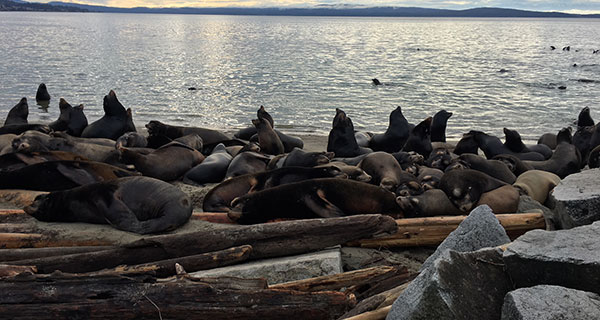 Lifelong friendships with Indigenous pals bring incredible benefits, including nuanced wisdom on the environment, and climate change in particular.
Lifelong friendships with Indigenous pals bring incredible benefits, including nuanced wisdom on the environment, and climate change in particular.
You get to watch people who grew up in oral cultures – accustomed to learning from elders and spending long periods with the land and the water – become elders themselves.
And because talking is the prime method of instruction and sharing, you get to participate in lifelong conversations of great substance, and often great humour.
There’s sadness, too, but tough times are bridged with wisdom and great forbearance.
Perhaps best of all now are the regular phone calls that connect us, voice to voice.
I’ve known Ray Williams of Yuquot, on Nootka Island off Vancouver Island’s west coast, for nearly 50 years. We met when I was an outdoor instructor at Strathcona Park Lodge.
Over the years, we’ve become close advocates for many environmental causes, and now we’re focused on discussions of observed changes in our rural coastal villages. Last week, we talked about the recent invasions of too-cook (California sea lions).
“A few weeks ago, we had 50 to 60 too-cook in the bay – I haven’t ever seen that many before. They’ve come up here looking for food, I think,” said Ray.
I observed and photographed the same phenomenon at Skelhp in January, about a month before the local herring spawns.
Ray has also noted a return of large schools of herring to Yuquot. “We had a four-mile-long herring spawn last spring. The biggest since the 1940s. But we’ve also seen the strange disappearance of red snappers. And, boy, the beach front in the cove is really eroding. Something is happening, Michael.”
Lloyd Binder, my pal from Inuvik in the western Arctic, agrees with Ray.
Lloyd shares Sami and Inuvialuit heritage, giving him an unique bicultural perspective. For the past 22 years, he’s been the steward of a 5,000-head reindeer herd (reflecting his Sami mother’s heritage), and a regular participant at his brother Richard’s beluga whaling camp at Kittigazuit (drawing on their Inuvialuit father’s heritage).

Over 400 California sea lions pay a surprise visit to Powell River prior to the local herring spawn. Are they migrating in usual patterns looking for food?
Lloyd had the great idea of introducing the Western Arctic Claim concept of co-management to the Russian Sami when Mikhail Gorbachev began his revolutionary presidency. And he and I did just that with the Gorbachev Foundation’s support from 1995 to 2000.
Ever since, we’ve been co-conspirators on a variety of causes.
Recently, Lloyd’s been lecturing and visiting family down south, and we met in Vancouver. I asked him about recent changes he has observed.
“Well, winter reindeer herding snow access season is shorter and the shorter safe ice season requires more caution. Also, rock ptarmigan have shown up recently in willow ptarmigan areas.” They join hummingbirds, robins, dragon flies and Pacific salmon as new species that have begun to arrive in the high Arctic.
All pose interesting dilemmas for northern Indigenous languages, which contain no words to describe them. How do you say hummingbird in Inuvialuktun?
Lloyd also mentioned that his family’s whaling camp at Kittigazuit is experiencing unaccustomed high summer winds that make their beluga whaling much more difficult. As the summer ice cover recedes and new weather patterns develop, its getting more difficult to approach and follow the small beluga pods to determine which whale to harvest. Rough waters also require bigger boats for the whaling crews.
Once again, multi-levelled change is happening.
When I spoke recently with my friend Elmer Ghostkeeper, who lives on the Buffalo Lake Metis Settlement north of Edmonton, he too had recent observations to share.
Elmer and I negotiated the right-of-way of the PolarGas Pipeline through Denendeh in the mid-1980s. His distinguished career has spanned business, politics and academia, and he’s still an active Metis horseman in his 70s.
Elmer is reporting extremely harsh weather for the end of February. “Michael, we’ve got four feet of snow and it’s -38C right now. It’s not letting up yet, and it’s very hard on the cattle and horses. This is unusual for this time of year.”
My recent check-ins with Ray, Lloyd and Elmer have reinforced my sense of the importance of the nuanced observations of people who live with the land.
As we come to grips with combatting climate change, we need to be conscious of their Indigenous climate wisdom. We need to use that wisdom to co-manage our climate change planning and responses.
Troy Media columnist Mike Robinson has been CEO of three Canadian NGOs: the Arctic Institute of North America, the Glenbow Museum and the Bill Reid Gallery.
The views, opinions and positions expressed by columnists and contributors are the author’s alone. They do not inherently or expressly reflect the views, opinions and/or positions of our publication.

